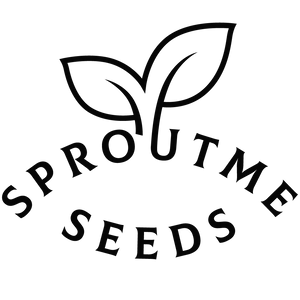Marjoram
Marjoram, scientifically known as Origanum majorana, is a versatile herb with a delicate flavor reminiscent of oregano and a sweet aroma. It is widely used in culinary dishes, herbal remedies, and even as an ornamental plant in gardens. Growing marjoram not only provides fresh herbs for cooking but also adds beauty and fragrance to your outdoor space.
Preparing for Growing:
- Selecting a planting location: Choose a sunny location with well-draining soil.
- Soil preparation: Prepare the soil by incorporating organic matter and ensuring good drainage.
- Purchasing or preparing containers/pots: If growing in containers, choose pots with drainage holes.
Starting from Seeds Indoors:
- Seed preparation: Marjoram seeds do not require pre-treatment.
- Choosing suitable pots/containers: Use seed trays or small pots filled with seed-starting mix.
- Sowing and caring for seeds indoors: Sow seeds thinly on the surface of the soil, cover lightly, and keep the soil consistently moist. Place the containers in a warm location with plenty of sunlight or under grow lights.
Starting from Seeds Outdoors:
- Soil preparation: Prepare the outdoor planting area as described earlier.
- Selecting appropriate timing and method for outdoor sowing: Sow marjoram seeds directly into the garden bed after the last frost date in spring.
- Caring for seeds outdoors: Keep the soil evenly moist until seeds germinate, which typically takes 7-14 days.
Growing in Containers/Pots:
- Selecting suitable plants for containers: Marjoram grows well in containers, hanging baskets, or window boxes.
- Container and soil preparation: Use well-draining containers filled with a mixture of potting soil and compost.
- Sowing or transplanting plants into containers: Sow seeds or transplant seedlings into containers following the same procedure as outdoor planting.
- Caring for container plants: Place containers in a sunny location, water regularly to keep the soil evenly moist, and fertilize every 4-6 weeks with a balanced fertilizer.
Transplanting to Garden:
- Soil and planting site preparation: Choose a sunny location with well-drained soil.
- Correct timing and method for transplanting: Transplant marjoram seedlings outdoors after the last frost date, spacing them 12-18 inches apart.
- Post-transplant care: Water the transplanted seedlings thoroughly and provide shade for a few days to help them acclimate to outdoor conditions.
Plant Care:
- Watering: Marjoram prefers moderately moist soil. Water when the top inch of soil feels dry.
- Fertilizing: Apply a balanced fertilizer once a month during the growing season to promote healthy growth.
- Weeding: Keep the area around marjoram plants weed-free to reduce competition for nutrients and water.
- Pest and disease management: Marjoram is relatively pest and disease-resistant, but occasional pests like aphids or spider mites may occur. Monitor plants regularly and treat infestations promptly with organic remedies if necessary.
Harvesting:
- Determining when plants are ready for harvest: Harvest marjoram leaves when the plant is actively growing and has reached a height of 6-8 inches.
- Harvesting and storage guidelines: Cut stems with a sharp pair of scissors or pruners. Harvest leaves in the morning when essential oil content is highest. Use fresh leaves immediately or dry them for later use.
When to Start from Seeds by USDA Plant Hardiness Zones:
- Start marjoram seeds indoors 6-8 weeks before the last frost date in your area or sow them directly outdoors after the danger of frost has passed.
Fast Facts:
- Planting depth: Sow seeds 1/4 inch deep or scatter them over the soil surface.
- Seed spacing: Thin seedlings to 12-18 inches apart.
- Plant spacing: Space plants 12-18 inches apart.
- Number of seeds per pot/container: Sow several seeds per container and thin to the strongest seedling.
- Water preferences: Marjoram prefers moderately moist soil.
- Sun preferences: Full sun to partial shade.
- Soil type and other important factors: Well-draining soil with a pH of 6.0 to 7.0.
- Companion Planting: Marjoram attracts beneficial insects like bees and butterflies. Plant near vegetables and other herbs to enhance pollination.
- Temperature Preference: Marjoram thrives in moderate temperatures but can tolerate mild frost.
- Days to Germination: Marjoram seeds typically germinate in 7-14 days.
- Days to Harvest: Marjoram leaves can be harvested when the plant is actively growing, usually after 6-8 weeks.







